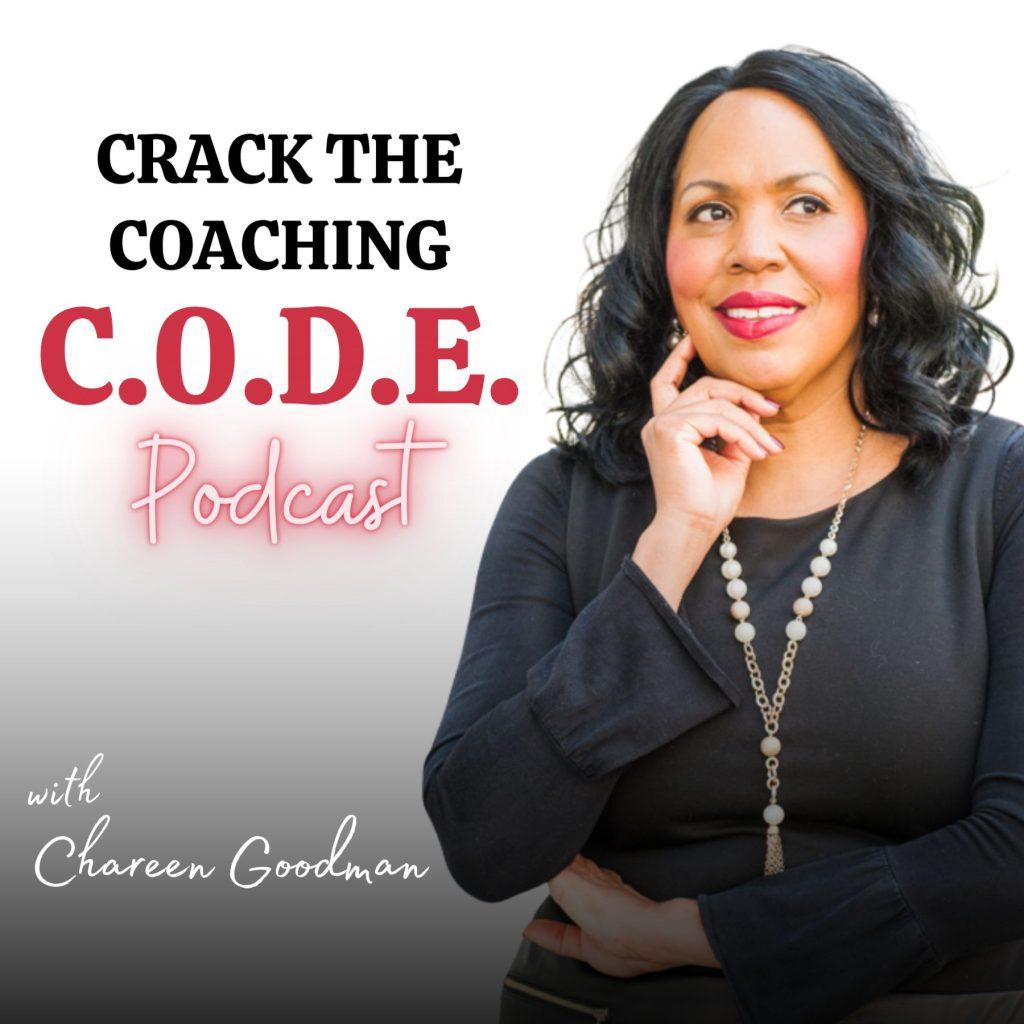How to Master Lead Generation on LinkedIn as a High-Ticket Coach
For high-ticket coaches—whether you specialize in executive coaching, business coaching, or leadership development—success often relies on one vital factor: a consistent influx of high-quality leads.
With over a billion professionals on the platform, LinkedIn presents a tremendous opportunity to find leads that align with your coaching expertise.
In this blog post, you’ll discover how to turn your connections into clients with actionable strategies and techniques that maximize LinkedIn’s potential for your business.
Key Takeaways:
- A strong LinkedIn strategy can help you connect with the right clients and partners.
- Targeted marketing ensures that your message reaches the ideal audience.
- An optimized LinkedIn profile increases your visibility and credibility.
Crafting a Well-Planned LinkedIn Strategy
To thrive as a coach, you need more than just a LinkedIn profile. A well-rounded strategy is critical for positioning yourself as an expert, engaging with your audience, and generating leads.
Content Creation and Engagement
At the heart of your LinkedIn strategy is content. Regularly sharing valuable, insightful posts is vital for establishing your credibility and authority within your niche. Here’s why this is so important for lead generation on LinkedIn.
Content Positions You as an Authority
When you consistently publish high-quality content—whether it’s long-form articles, quick tips, or client success stories—it shows your audience that you’re an expert in your field. This positions you as a go-to resource for insights, advice, and solutions within your niche.
Over time, people will begin to associate your name and your brand with a particular expertise, making you top of mind when they need a service like yours.
Adds Value to Your Audience’s Experience
Lead generation doesn’t happen by asking for business upfront. It’s about creating value that makes potential clients feel like you are genuinely trying to help them, rather than just selling to them. When your content is educational, informative, or inspirational, it becomes a magnet for your target audience.
Sharing content that addresses common challenges or offers practical solutions speaks directly to the needs of your ideal clients. When they see you delivering value for free, it creates a positive impression, and they’re more likely to seek your expertise for more in-depth support or services.
This subtle approach to lead generation makes prospects feel that they are entering into a relationship with you based on trust and value, rather than just a transactional sale.
Content Fuels Engagement
Creating valuable content is just the first step. Engagement is equally important. While content positions you as an expert, engagement allows you to build relationships, which are the lifeblood of LinkedIn.
Commenting on other people’s posts, joining relevant discussions, and participating in LinkedIn groups where your ideal audience is active demonstrates that you are approachable and interested in meaningful interactions, not just self-promotion.
Engagement has several benefits:
- Visibility: Each comment, like, or share you make shows up in other people’s networks, expanding your reach beyond your immediate circle.
- Connection Building: When you take the time to comment thoughtfully on posts or reply to comments on your content, you foster genuine connections. This helps to turn cold prospects into warm leads because people remember those who engage with them directly and thoughtfully.
- Increased Algorithm Favorability: LinkedIn’s algorithm favors profiles that engage with content, increasing the chances of your posts being seen by a broader audience. This leads to greater organic visibility and the likelihood of connecting with potential clients.
Opens the Door to Opportunities
By actively engaging with others and consistently posting valuable content, you are not only nurturing relationships but also creating opportunities. This could be in the form of direct inquiries from people who have seen your posts or indirect opportunities such as invitations to participate in speaking engagements, collaborations, or partnerships.
Engaging with others on LinkedIn also allows you to showcase your knowledge in real-time discussions. When potential clients see you actively contributing valuable insights in relevant conversations, they are more likely to view you as someone who can solve their problems.
In short, content creation and engagement on LinkedIn are not just about boosting visibility; they are about fostering trust, building relationships, and nurturing leads in a non-salesy, value-driven way.
Why Tailoring Your LinkedIn Strategy is Crucial for Lead Generation
A one-size-fits-all approach simply doesn’t work for effective lead generation, especially on a platform like LinkedIn where users span a vast array of industries, roles, and professional goals.
Customizing your approach means creating a strategy that speaks directly to your unique audience and aligns with your specific business objectives. Your strategy should be tailored to your goals and targeted to your audience.
Your LinkedIn strategy needs to be built around what you’re aiming to achieve. Whether you want to increase your brand visibility, attract high-ticket clients, or position yourself as a thought leader, your approach must reflect these goals.
For example:
- Executive Coaches: If your goal is to work with C-suite executives or corporate decision-makers, your messaging, content, and overall engagement need to reflect that. Your posts might focus on leadership strategy, executive decision-making, or high-level organizational growth. By honing in on topics that matter to executives, you position yourself as an expert in solving their unique challenges.
- Leadership Coaches: If your focus is on helping emerging leaders or mid-level managers, you need to speak directly to the growth pains and leadership development challenges they face. Your content might emphasize personal development, team management, or leadership skills for career advancement.
Tailoring your approach in this way makes it clear that you understand the specific needs and goals of your audience. This increases the likelihood that they’ll view you as someone who can help them overcome those challenges.
How to Customize Your Approach
- Know Your Audience: Start by understanding exactly who your ideal client is. What industries are they in? What specific challenges do they face? What goals are they trying to achieve?
- Align Your Content with Their Pain Points: Once you know your audience, create content that directly addresses their concerns. For example, if you coach executives, focus on high-level strategic topics like leadership in times of crisis or navigating corporate restructuring.
- Adjust Your Messaging: Tailor your messaging style to suit your audience. If you’re targeting corporate leaders, your tone may need to be more formal and data-driven, while leadership coaching for mid-level managers may benefit from a more approachable, personal tone.
- Monitor and Refine: Continually evaluate the performance of your content and adjust your approach based on what resonates most with your audience. Use LinkedIn analytics and engagement data to fine-tune your strategy for better results.
In summary, customizing your approach to lead generation on LinkedIn is crucial for attracting the right clients and driving engagement. When you tailor your content, messaging, and strategy to address the specific needs of your ideal audience, you set yourself up for deeper connections, greater trust, and more effective lead conversion.
The Importance of Targeted Marketing
Targeted marketing is all about understanding who your audience is, identifying their pain points, and crafting personalized messages that resonate with them on a deeper level.
Why Targeted Marketing Matters
At the core of successful lead generation is relevance. If your content and outreach don’t speak directly to the people you’re trying to attract, your efforts will likely fall flat.
Today, your ideal clients are bombarded with content every day on LinkedIn, and the only way to capture their attention is to show that you understand their specific challenges and goals.
By using targeted marketing, you ensure that your messaging is finely tuned to address the particular needs of your ideal clients. This makes it easier to cut through the noise and connect with the people most likely to benefit from your services. More importantly, it positions you as a problem-solver, not just another coach or consultant selling a service.
1. Conduct Market Research to Understand Your Ideal Clients
The first step in effective targeted marketing is market research. You need to have a deep understanding of who your ideal clients are before you can create messaging that resonates with them. This goes beyond demographic information—though knowing things like industry, role, and company size is important. You need to dig deeper into their behaviors, motivations, and pain points.
Ask yourself:
- What industries do my ideal clients work in?
- What challenges are they facing right now?
- What goals are they trying to achieve?
Understanding their day-to-day struggles will help you craft messages that not only grab their attention but also position you as someone who has the solution to their problems.
Tools to Help with Market Research
Fortunately, LinkedIn provides powerful tools like Sales Navigator, which allows you to zero in on the exact types of people you want to connect with. This tool can help you filter leads by job title, industry, geography, and more, ensuring that you are targeting the right audience.
Beyond LinkedIn’s tools, there are AI-powered platforms like Perplexity or CrystalKnows that can give you even deeper insights into your target audience’s behaviors and preferences.
Market research lays the foundation for everything else in your targeted marketing strategy. When you know exactly who you’re talking to, you can speak directly to their needs, positioning yourself as the expert they’ve been looking for.
2. Use Data-Driven Insights to Refine Your Strategy
Once you’ve done your research and begun implementing your targeted marketing strategy, the next step is to continuously optimize your efforts. This is where data-driven insights come into play.
It’s not enough to simply post content or send messages and hope for the best. You need to track how well your efforts are performing and adjust your strategy accordingly. This is where tools like LinkedIn analytics become invaluable.
Leverage LinkedIn Analytics
LinkedIn analytics provide a wealth of information about your content’s performance. You can track things like:
- Profile views
- Post engagement (likes, shares, and comments)
- Connection growth
- Click-through rates on links in your posts or messages
By monitoring these metrics, you can see what content is resonating with your audience and what isn’t. For example, if you notice that posts about leadership development are getting a lot of engagement, while posts about team management aren’t, you can shift your focus toward the topics that are more impactful.
Using this data allows you to continuously refine your content and messaging. Over time, you’ll be able to craft posts and outreach messages that are specifically tailored to the types of content your audience engages with most. This increases your chances of turning connections into leads and ultimately, clients.
Using AI for Enhanced Personalization
AI tools like Taplio can help you gather even more precise data about your LinkedIn performance. AI can analyze engagement patterns and provide recommendations for the best times to post, the type of content that resonates, and even the ideal length of your messages. This helps you optimize your efforts with data-backed insights, rather than relying on guesswork.
When your approach is targeted, you not only increase your chances of generating leads but also improve the quality of those leads. By focusing on the right audience, you’ll be able to build better relationships, close more deals, and see a higher return on your marketing efforts.
Optimizing Your LinkedIn Profile
Optimizing your LinkedIn profile is crucial because it enhances your visibility, authority, and trustworthiness on the platform, significantly improving your chances of attracting high-quality leads.
Your LinkedIn profile is often the first impression potential clients will have of you. It’s not just a digital resume—it’s your opportunity to showcase your expertise, build credibility, and position yourself as a solution provider for the challenges your ideal clients face.
A well-optimized profile does more than just look polished—it speaks directly to your target audience, communicates your value, and acts as a magnet for opportunities.
For coaches and consultants, a strong profile is essential in building trust with potential clients. When your profile is tailored and strategically structured, it increases your visibility on LinkedIn searches, draws in the right kind of connections, and establishes you as an authority in your niche.
1. Professional Headshot and Branding
Your professional Headshot is one of the most important visual elements of your LinkedIn profile. As the saying goes, “A picture is worth a thousand words,” and this is especially true on LinkedIn.
Why is this so important for lead generation? Because it conveys trust and approachability.
Clients are far more likely to reach out to someone who looks friendly, competent, and approachable. A clear, well-lit headshot gives the impression that you take your profession seriously and are ready to engage.
The Role of Your LinkedIn Banner and Headline
In addition to your headshot, your LinkedIn Banner and Headline play critical roles in building your brand. Your banner is prime real estate for visual branding—whether it includes your company logo, tagline, or a visual representation of your services, it should reflect your authority brand and catch the eye of your ideal future clients.
Your Headline, however, is even more impactful. It’s often the first thing people notice after your name and photo. Rather than simply listing your job title, use this space to highlight your unique value proposition.
- What problems do you solve for your clients?
- How do you deliver results?
For example, instead of “Business Coach,” you might use something like, “Helping Coaches Scale to Six Figures by Streamlining Their Client Acquisition Systems.”
This speaks directly to the needs of your potential clients and immediately tells them how you can help.
2. Compelling Summary
Your LinkedIn Summary is your chance to tell your professional story, convey your expertise, and explain exactly how you help clients achieve their goals. But simply listing your credentials or past job roles won’t cut it. This section needs to engage readers on an emotional level, draw them in with storytelling, and connect your skills with their needs.
Another critical element of your summary is the strategic use of keywords. LinkedIn’s search algorithm relies heavily on keywords, so be sure to include terms that are relevant to your niche. Think about the phrases or keywords that your ideal clients might use when searching for services like yours, and naturally incorporate them into your summary. This helps ensure that your profile appears in more search results, increasing your visibility to potential leads.
3. Showcase Skills and Endorsements: Building Social Proof
Skills and endorsements on LinkedIn function as social proof, a powerful factor in building trust with potential clients. Listing your most relevant skills showcases your expertise, but the real power lies in having these skills endorsed by others. When prospects see that your peers, clients, or colleagues have validated your skills, it adds credibility to your profile.
Why Endorsements and Recommendations Are Essential for Lead Generation
Endorsements act as a third-party validation of your abilities. They tell potential clients that not only do you claim to be an expert, but others in your network vouch for you too. This validation can be the difference between someone browsing your profile and someone deciding to reach out.
In addition to endorsements, Recommendations are equally important. Ask satisfied clients or colleagues to write short testimonials about their experience working with you. These recommendations serve as direct proof that you can deliver on your promises. The more relevant and specific the recommendation, the more weight it holds for potential clients.
The Combined Impact of an Optimized Profile
By focusing on these three key areas—professional branding, a compelling summary, and leveraging skills and endorsements—you create a LinkedIn profile that not only showcases your expertise but also builds trust with potential clients.
The more optimized your profile, the more likely it is to attract attention from the right people, turning casual profile views into meaningful business opportunities.
It’s a Wrap!
Lead generation on LinkedIn doesn’t happen overnight, but with the right strategy, it can become a powerful tool for growing your coaching business.
As a high-ticket coach, mastering LinkedIn lead generation can transform your business. With a well-crafted strategy that includes targeted marketing, relationship-building through content, and continuous optimization, you’ll establish a strong presence on LinkedIn and open the door to new opportunities for growth.
- The Power of Clarity Through the 1-1-1-1 Strategy for High-Ticket Coaches - January 1, 2025
- From LinkedIn Presence to LinkedIn Authority in 2025 - December 28, 2024
- Top 4 Strategies to Amplify Your Authority as a Coach In 2025 - November 25, 2024













